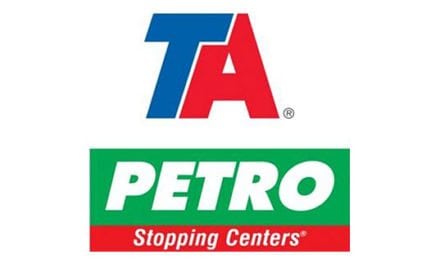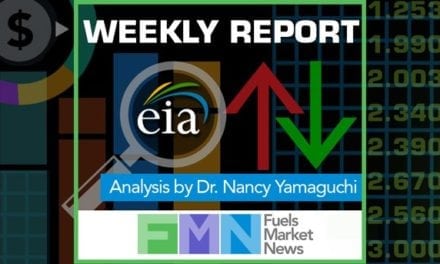“Fueled for Thought,” By Joe O’Brien, Source North America
The evolutions of motor fuels and transportation technologies have far-reaching and counterproductive consequences for our highways, jeopardizing the funding on which all drivers depend. How did this happen, and why should fuel retailers care?
Motor fuels taxes have been the bedrock of most roadway funding for decades. Because the relationship between fuel pricing, automotive purchasing trends and future fuels is as interconnected as the U.S. interstate system itself, fuel retailers need to stay abreast of changes within the funding structures. But before we look ahead to how the roadway funding mechanisms could change, let’s take a look back at what brought us to the funding crisis in the first place.
A Taxing Situation
The first federal gas tax was authorized in 1932 with the original intention of closing a gap in the general fund that had resulted from a depressed economy. The gas tax has undergone several revisions since then – increasing and decreasing, having been used to fund roadways or reallocated to other needs – as the times dictated. The last increase to the federal gas tax was authorized in 1993. Since then it has remained steady at 18.4 cents per gallon. Revenues from the federal gas tax support the Highway Trust Fund, a program modeled after the Social Security trust fund and which provides about 80 percent of the funding for roads, highways, bridges, tunnels and public transit.
Absent a federal gas tax increase for the past 24 years, states have been grappling to cover increasing road maintenance costs. As the infrastructure continues to age, the maintenance demands increase, but the federal gas tax does not adjust for inflation. In addition, improved fuel efficiency, an increase in electric and hybrid vehicles and a shift of population from the suburbs to urban areas have resulted in lower fuel consumption, and therefore, lower gas tax revenues. According to data from the U.S. Energy Information Administration, fuel consumption in 2010 was 18 percent lower than it was in 1970.
50 Years of Annual U.S. Vehicle Fuel Consumption – Average Gallons Per Vehicle

In the short term, some transportation budgets have been buoyed slightly by revenue generated by an improved economy. More revenue is coming in from vehicle sales taxes, and with the relatively low fuel prices, motorists are driving more (and therefore purchasing more fuel). However, a long-term financing solution has remained elusive.
As such, states are looking for ways to bridge their shortfalls. Seven states – Florida, Georgia, Indiana, Michigan, Nebraska, North Carolina and Pennsylvania – opened 2017 with higher state gasoline taxes. Some of the increases were modest (less than a penny per gallon) and based on automatic adjustments to the tax rate. But in other states, the increase was substantial. Pennsylvania hiked its tax rate by 7.9 cents per gallon (for a 58.3 cents-per-gallon tax) and Michigan increased its gas tax by 7.3 cents per gallon (for a 37.84 cents-per-gallon tax). Alaska, Louisiana, Mississippi, Oklahoma and Tennessee are debating increases of their own. Other states are redirecting monies from other funds, are depending on funding from the federal government or private project funding to shore up their transportation coffers.
Most people agree that increasing the federal gas tax rate isn’t a sustainable solution given the trend toward increasing fuel efficiency and more carbon-neutral automotive technologies. Here are few of the alternative ideas on the table for funding roads in the future:
Paving the Way for A New Funding Structure
Revise the Tax Structure: Some states are revisiting the structure of their motor fuel excise tax to create more parity between fuel types. In this instance, the tax rate would be adjusted for the energy content of the fuel being taxed. This approach, it is thought, will enable the fuel tax rates to better correlate to the distance a vehicle will travel on a given volume of fuel, whether it be petroleum-based or an alternative fuel.
Increased Fees: Some states are looking at raising all vehicle registration fees. For instance, Tennessee is looking at increasing vehicle registration fees by $5, while a bill proposed in Indiana would add an extra $15 registration fee. In addition, several states are either implementing or exploring charging fees for vehicles that utilize alternative fuels, particularly electricity. The thought behind this is that fees for electric vehicles will substitute the gasoline taxes these car owners either don’t have to pay, or are paying less of than their gasoline-purchasing counterparts. Ten states have already implemented annual EV fees that range from $50 to $300, and at least six others – Indiana, Kansas, Montana, New Hampshire, South Carolina and Tennessee – have introduced bills this year that would add fees for electric cars.
Vehicle Miles Traveled (VMT): In 2015, Oregon launched a limited program for 5,000 volunteer motorists who are charged 1.5 cents per mile driven. California and Colorado launched similar pilot programs in 2016, and Illinois began a limited program for trucks in 2015. In Colorado’s pilot program, a motorist driving a hybrid vehicle 1,000 miles per month pays $84 a year more than they are paying now in gas tax, while the owner of a light-duty truck pays $12 less a year than they are paying in gas taxes. Owners of pure electric vehicles pay about $200 a year. This type of road-use fee structure has taken hold abroad, where several European countries – including Germany, Poland and Switzerland – have implemented VMT fees for trucks. Other countries are looking to adopt similar programs.
More Tolls: More than half of states already have statewide or regional tolls. Recently, several states have also developed high-occupancy toll (HOT) lanes, which allow vehicles that do not meet the minimum occupancy requirement for high-occupancy vehicle (HOV) lanes to use these lanes with payment. Missouri is considering a variation on this theme: “managed lanes.” These lanes would provide motorists the ability to leave a congested, albeit free, lane for a new toll lane. In addition, the current federal administration has suggested a public/private partnership for infrastructure projects; presumably any such project for highway improvement would have a tolling component to reimburse the private partner. One challenge facing this funding approach is that investors are unlikely to be enticed by the meager amount of toll revenue generated in rural areas, which comprise over 95 percent of U.S. land according to the U.S. Census Bureau.
Navigating the Road Ahead
These alternative approaches to road funding have the potential to shape future consumer automotive preferences and driver behavior. Therefore, they would also influence the fuels that will be in demand on the forecourt. Will consumers be willing to adopt electric vehicles on a wide scale if the cars have higher costs of ownership? Will motorists be willing to pay a VMT tax for their lengthy commutes? Or will they pursue public transportation, or perhaps relocate to reduce the distance and their automotive financial expenses?
What becomes of the gas tax will directly impact fuel consumption. In this highly competitive market, fuel retailers who respond to changing consumption patterns sooner rather than later will position themselves for a sustainable future. But a situation where certain states increase gas taxes while other states eliminate gas taxes in favor of alternative taxes will lead to unbalanced competition at the borders, and greatly affect petroleum marketers with operations in multiple states.
 Joe O’Brien is Vice President of Marketing at Source™ North America Corporation. He has more than 20 years experience in the petroleum equipment fuel industry. Contact him at [email protected].
Joe O’Brien is Vice President of Marketing at Source™ North America Corporation. He has more than 20 years experience in the petroleum equipment fuel industry. Contact him at [email protected].







